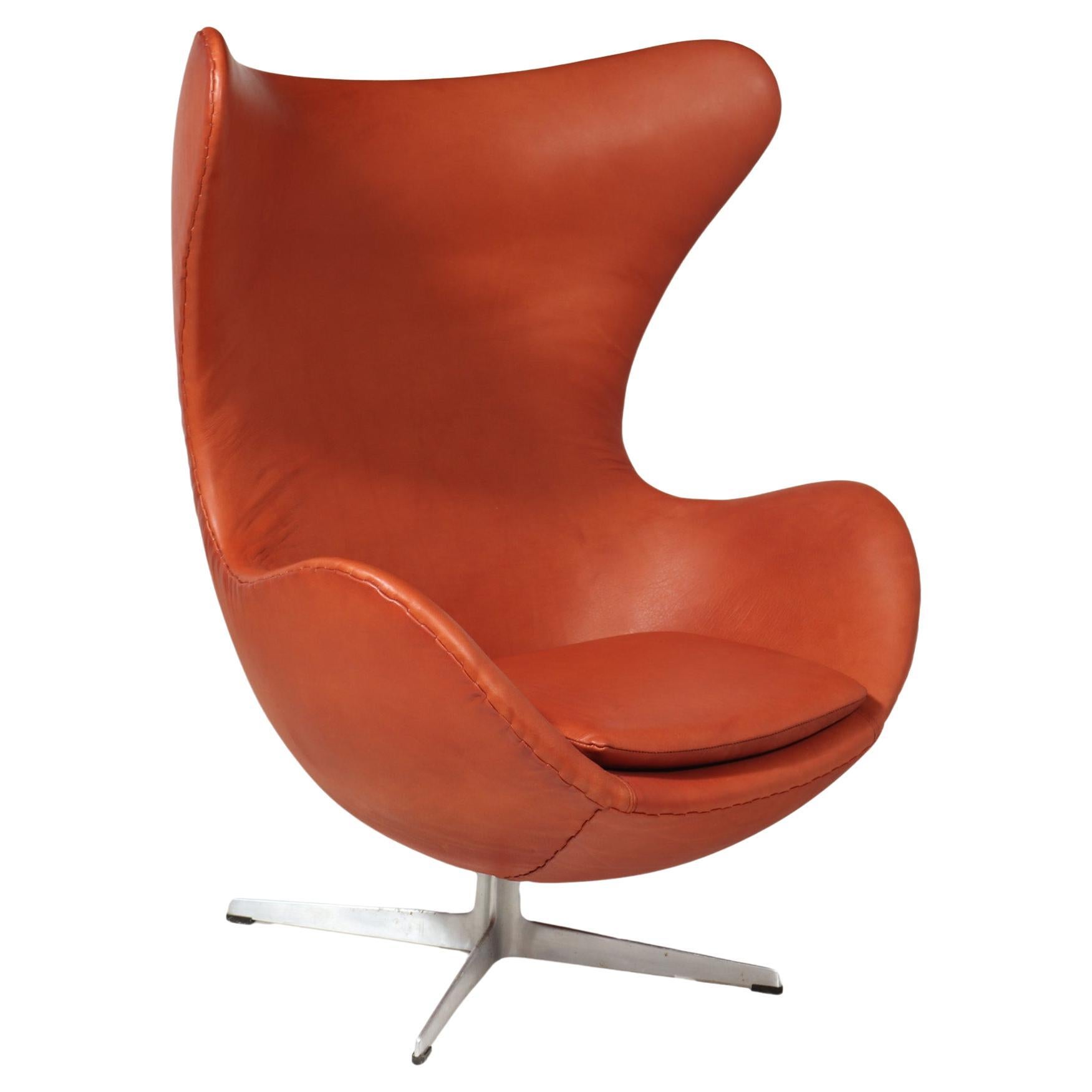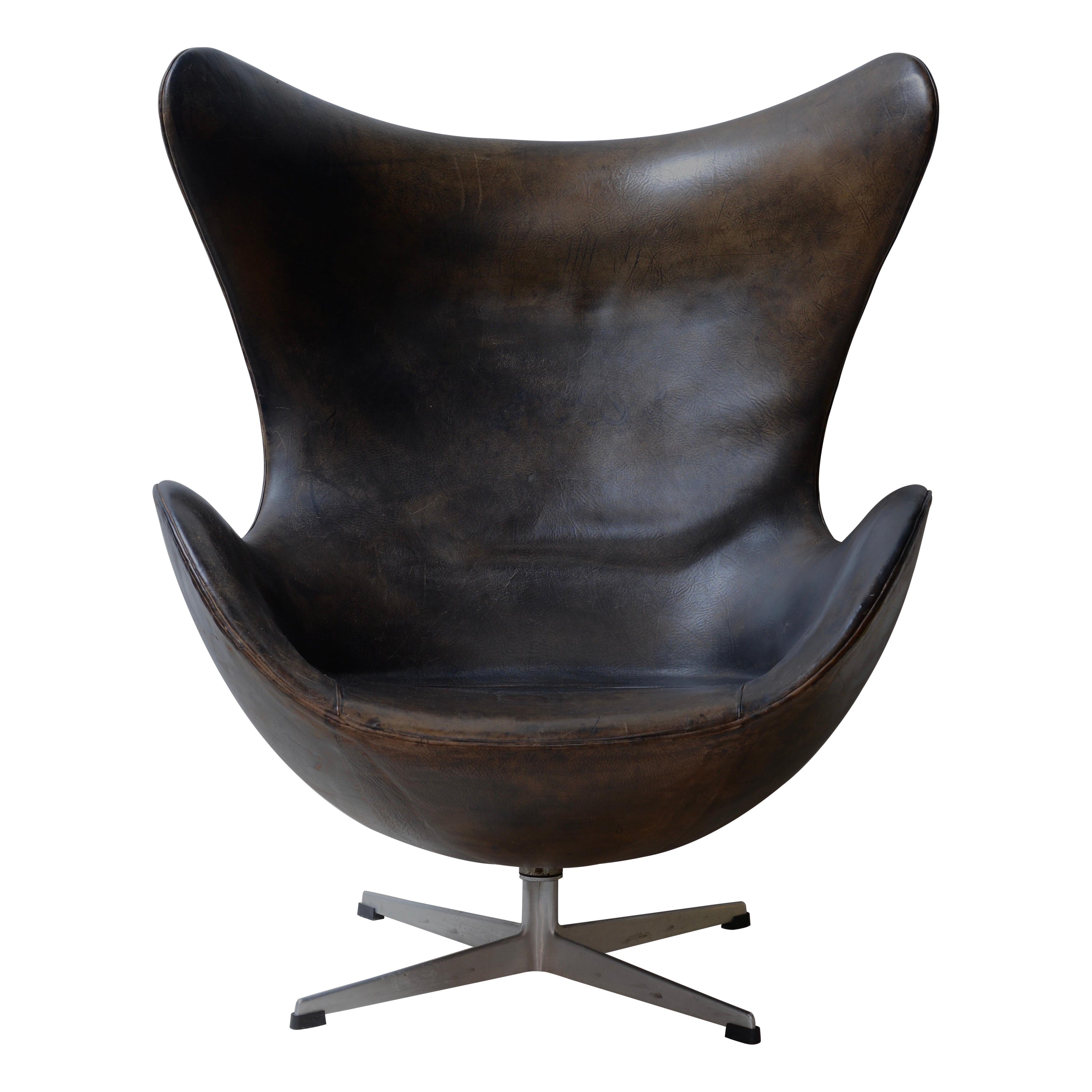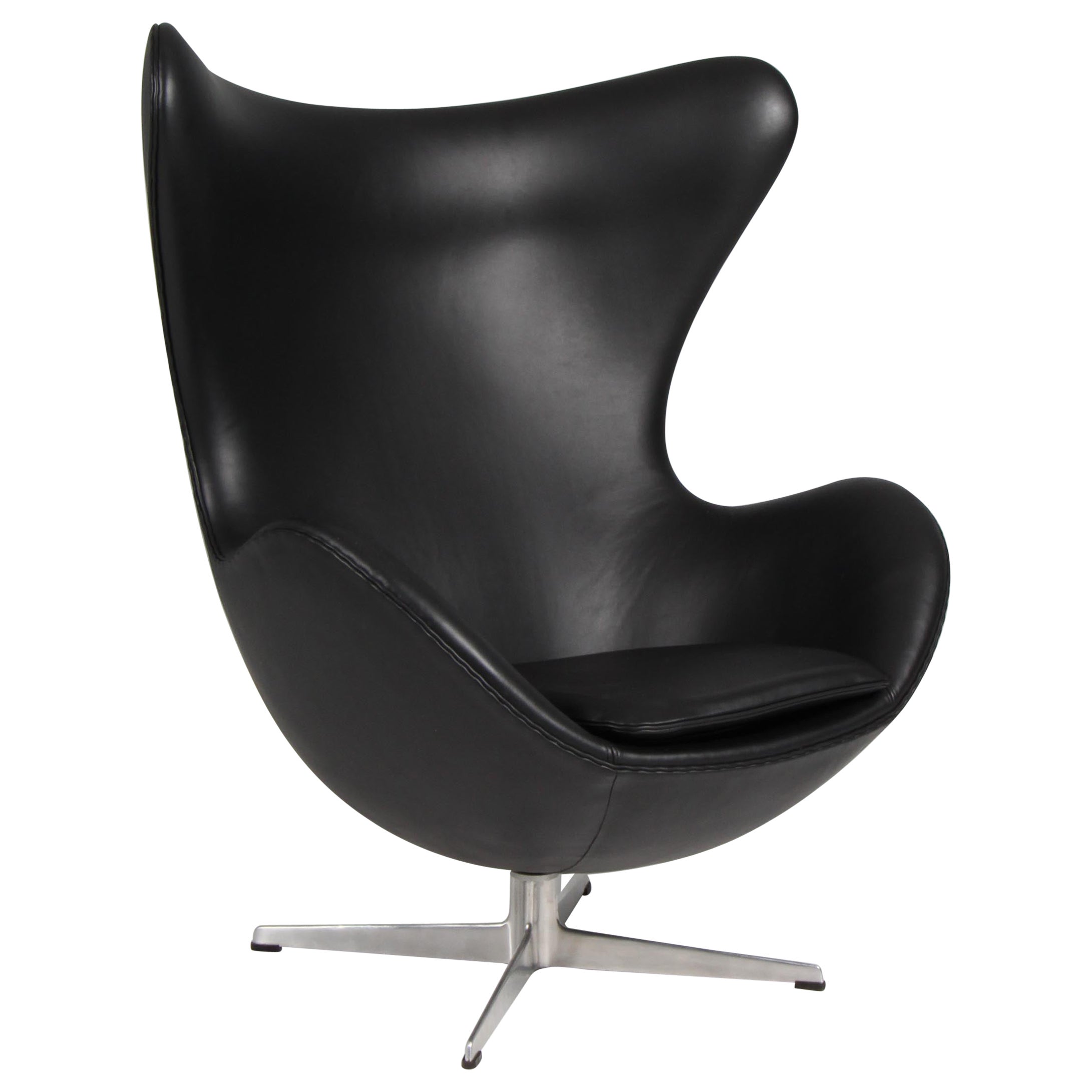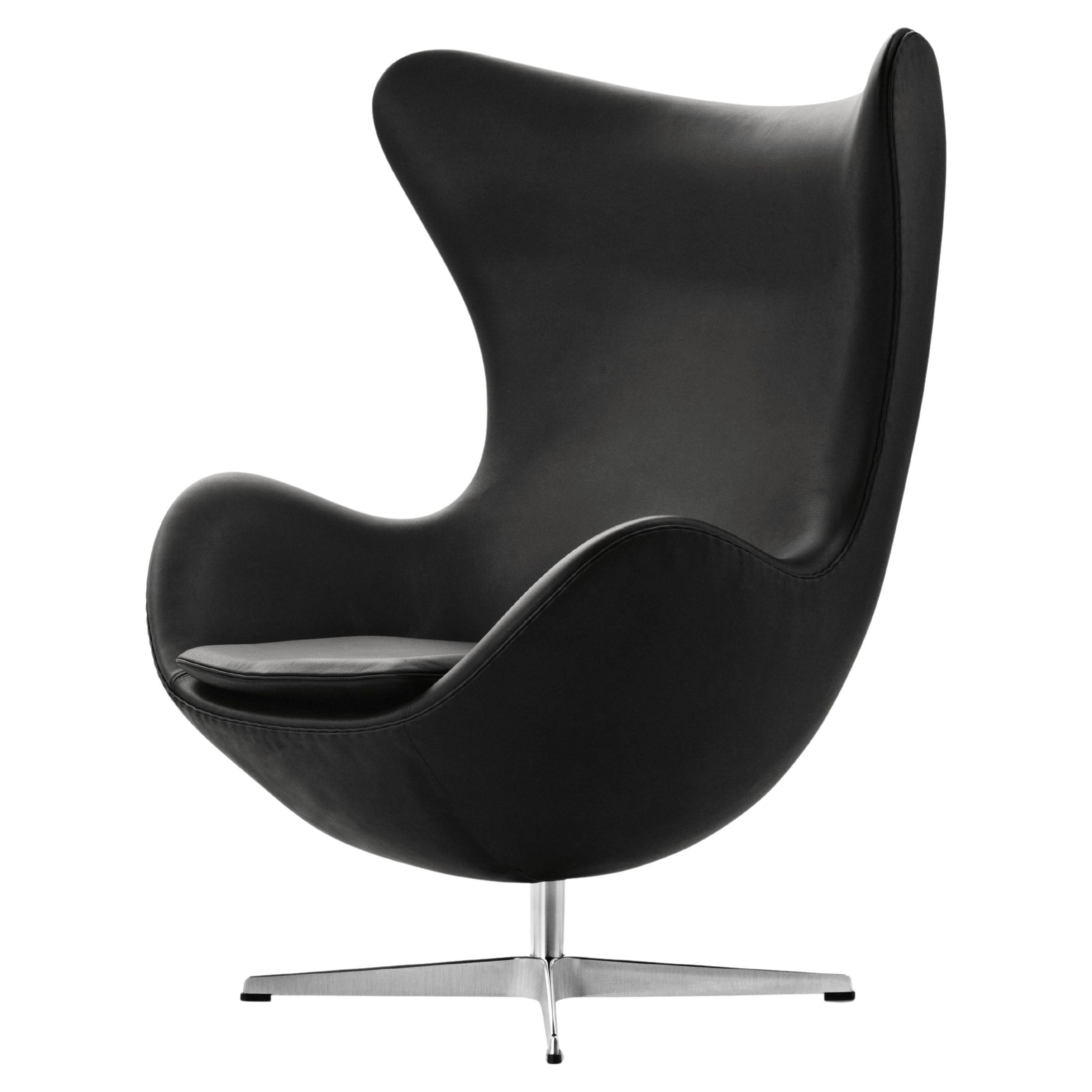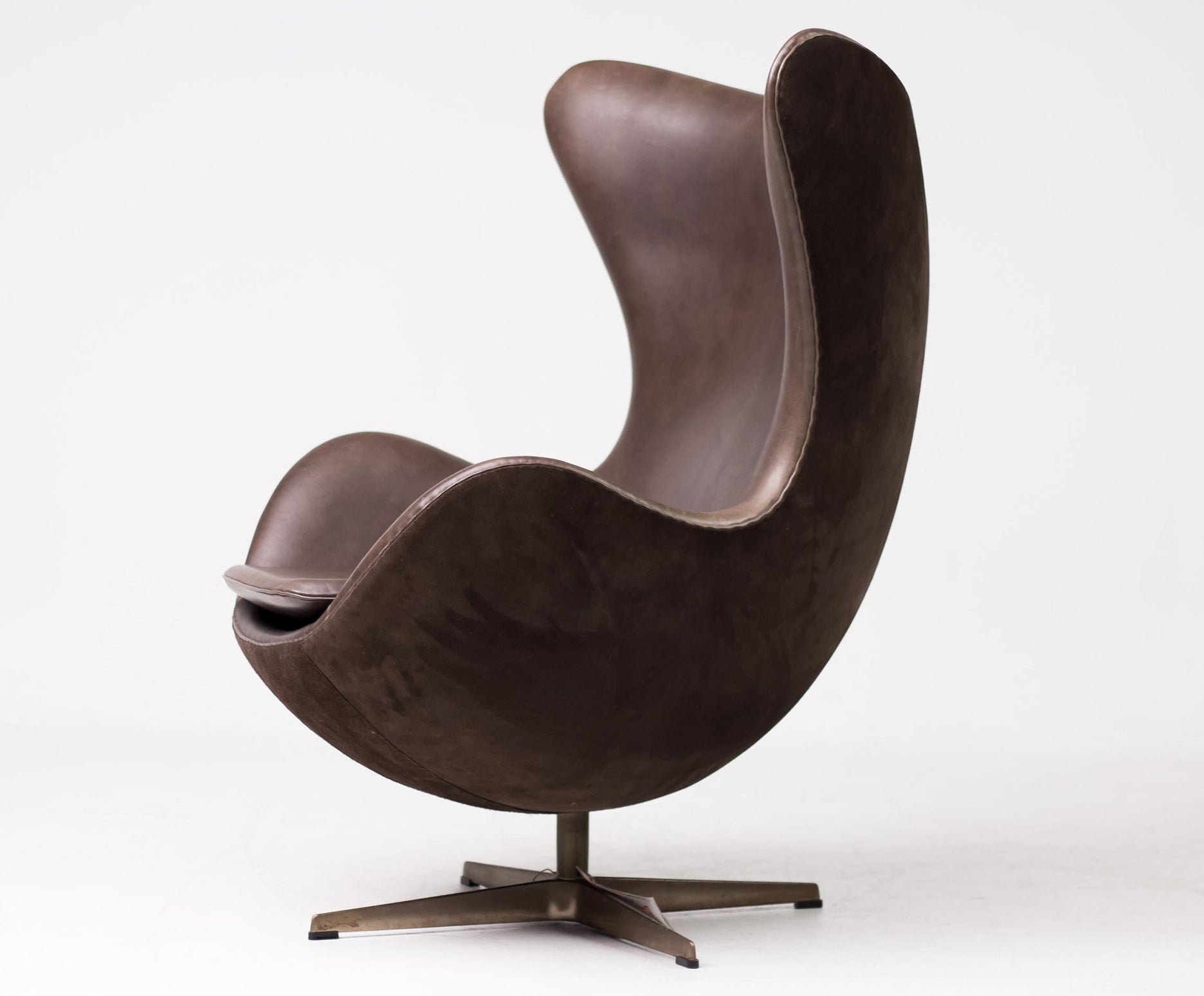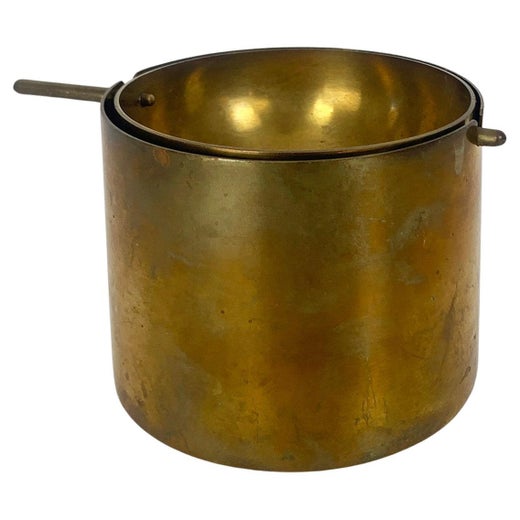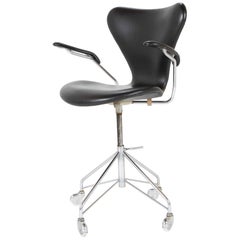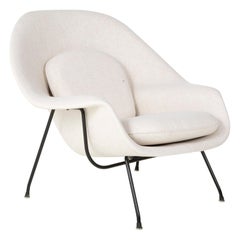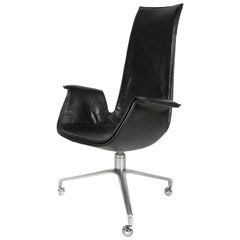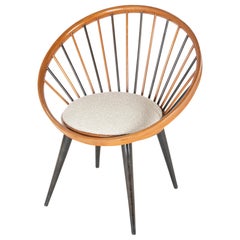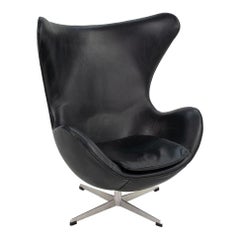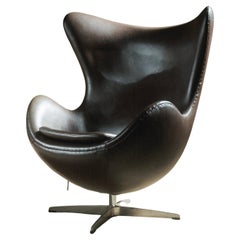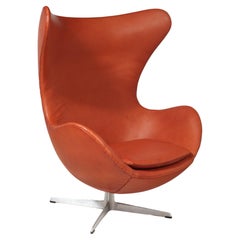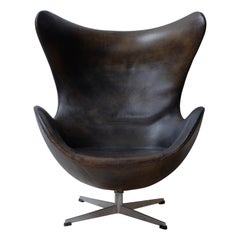Arne Jacobsen Egg Chair In Edelman Leather
About the Item
- Creator:Arne Jacobsen (Designer)
- Design:
- Dimensions:Height: 37.5 in (95.25 cm)Width: 34 in (86.36 cm)Depth: 42.25 in (107.32 cm)Seat Height: 16 in (40.64 cm)
- Materials and Techniques:
- Period:
- Date of Manufacture:1969
- Condition:
- Seller Location:Stamford, CT
- Reference Number:Seller: NHS/ELS1stDibs: LU91867252103
Egg Chair
Designed in 1958 for the SAS Royal Hotel in Copenhagen, Arne Jacobsen's Egg chair is a Scandinavian classic that has over the years become a fixture of corporate offices. It bears every mark of Jacobsen's outsized perfectionism, for which the Danish architect was widely known.
The Egg chair was notable for its overtly organic appearance, which Jacobsen (1902–71) achieved with craft-based padding and upholstery finishing. Unlike the furniture maker’s previous range of shell chairs designed in laminated wood for Fritz Hansen, the Egg — and the Swan chair along with it — reflected a soulful new vision of modernity. Both created for the accommodation property, which opened in 1960, the chairs were meant to contrast with the SAS Royal Hotel’s straight lines as well as showcase Jacobsen’s eye for interiors.
A graduate from the Royal Danish Academy of Fine Arts, Jacobsen was a polymath who made just about everything — light fixtures, ashtrays, silverware and even door handles. For the SAS Air Terminal and Royal Hotel, he handled every detail, from textiles to furnishings. In the 1940s, the one-time mason found considerable success as an industrial designer, most notably with the Ant chair and Series 7 chairs for Fritz Hansen.
Jacobsen was influenced by modernism and designers like Ludwig Mies van der Rohe. Forward-looking projects like the “House of the Future” — codesigned with Flemming Lassen in 1929 and featuring a then-revolutionary automatic garage door opener — cemented his status as an innovator. Throughout his career, Jacobsen earned many awards, including the prestigious RIBA Bronze Medal in 1963.
With the Egg chair, Jacobsen continued his ongoing experimentation with synthetic materials. First, he devised small-scale clay models in his garage. The prototypes' finished shells were made of fiberglass-reinforced polyurethane foam, padded with cast latex foam rubber and then, upholstered with leather — or, in the cost-conscious hotel’s case, fabric.
Today, the Egg chair is supported by welded steel tubing and is mounted on a lightweight aluminum base. It is available from Fritz Hansen.
Arne Jacobsen
The eye-catching work of the Danish architect and designer Arne Jacobsen often introduces new collectors to mid-20th century furniture. With their fluid lines and sculptural presence, Jacobsen’s signature pieces — the elegant Swan chair and the cozy-yet-cutting edge Egg chair, both first presented in 1958 — are iconic representations of both the striking aesthetic of the designers of the era and their concomitant attention to practicality and comfort. Jacobsen designed furniture that had both gravitas and groove.
Though Jacobsen is a paragon of Danish modernism, his approach to design was the least “Danish” of those who are counted as his peers. The designs of Hans Wegner, Finn Juhl, Børge Mogensen and others grew out of their studies as cabinetmakers. They prized skilled craftsmanship and their primary material was carved, turned and joined wood. Jacobsen was first and foremost an architect, and while he shared his colleagues’ devotion to quality of construction, he was far more open to other materials such as metal and fiberglass.
Many of Jacobsen’s best-known pieces had their origin in architectural commissions. His molded-plywood, three-legged Ant chair (1952) was first designed for the cafeteria of a pharmaceutical company headquarters. The tall-backed Oxford chair was made for the use of dons at St. Catherine’s College, Oxford, whose Jacobsen-designed campus opened in 1962 (while still under construction). The Swan, Egg and Drop chairs and the AJ desk lamp were all created as part of Jacobsen’s plan for the SAS Royal Copenhagen Hotel, which opened in 1960. (The hotel has since been redecorated, but one guest room has been preserved with all-Jacobsen accoutrements.)
To Jacobsen’s mind, the chief merit of any design was practicality. He designed the first stainless-steel cutlery set made by the Danish silver company Georg Jensen; Jacobsen’s best-selling chair — the plywood Series 7 — was created to provide lightweight, stackable seating for modern eat-in kitchens. But as you will see from the objects on 1stDibs, style never took a backseat to function in Arne Jacobsen’s work. His work merits a place in any modern design collection.
Find authentic Arne Jacobsen chairs, tables, sofas and other furniture on 1stDibs.
- ShippingRetrieving quote...Shipping from: Stamford, CT
- Return Policy
More From This Seller
View AllMid-20th Century Danish Mid-Century Modern Office Chairs and Desk Chairs
Metal
Vintage 1950s American Mid-Century Modern Chairs
Steel
Vintage 1960s Danish Modern Chairs
Steel
Vintage 1960s Swedish Mid-Century Modern Chairs
Birch
Mid-20th Century Swedish Mid-Century Modern Lounge Chairs
Leather
Vintage 1970s Danish Modern Chairs
Chrome
You May Also Like
Vintage 1960s Danish Modern Lounge Chairs
Aluminum
Vintage 1970s Mid-Century Modern Swivel Chairs
Iron
Vintage 1960s Danish Mid-Century Modern Armchairs
Leather
Vintage 1950s Danish Scandinavian Modern Lounge Chairs
Leather
Vintage 1960s Danish Scandinavian Modern Lounge Chairs
Leather
21st Century and Contemporary Danish Scandinavian Modern Lounge Chairs
Metal, Aluminum


